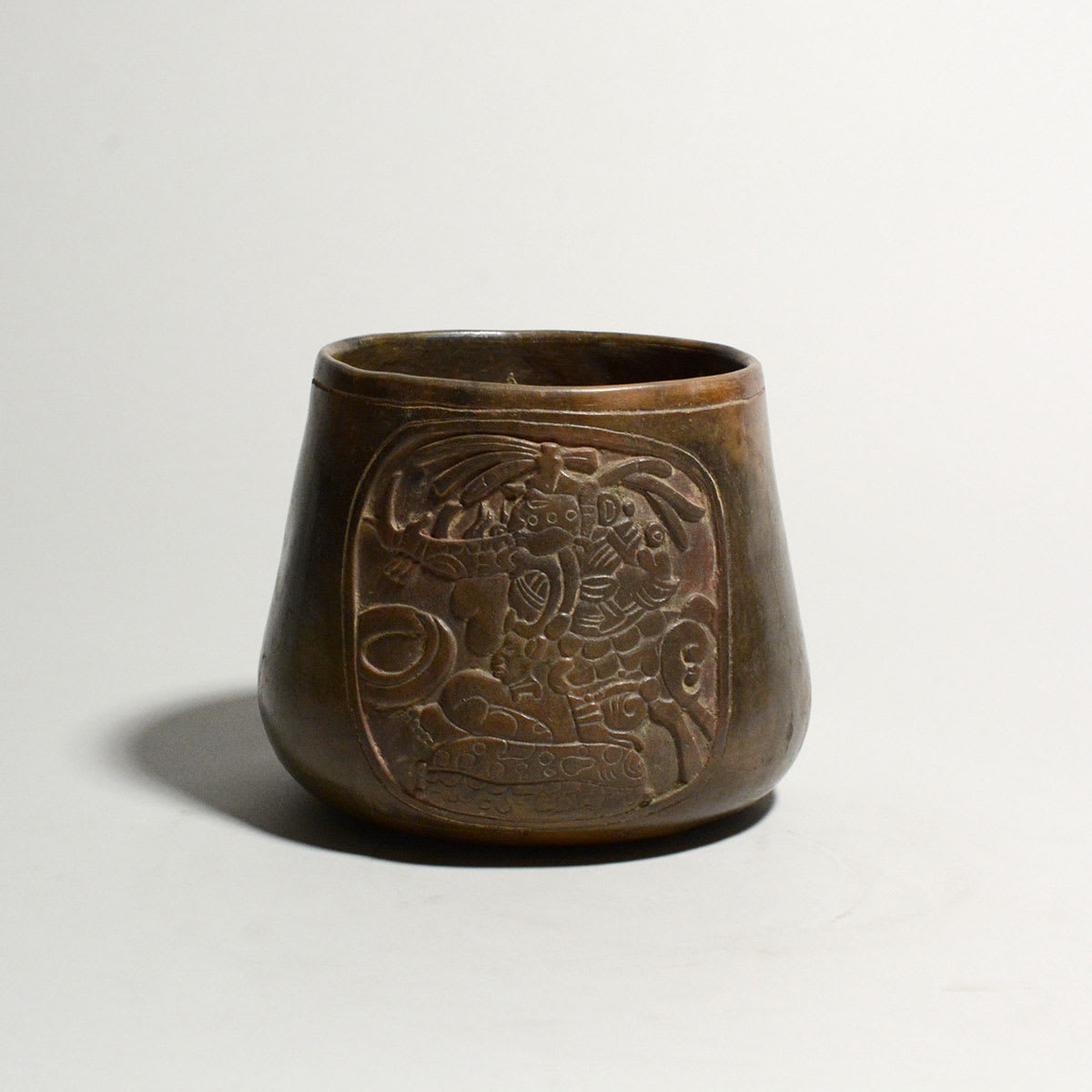Mayan Terracotta Bowl, 500 CE - 900 CE
Terracotta
16.8 x 14 cm
6 5/8 x 5 1/2 in
6 5/8 x 5 1/2 in
X.0696
Further images
This stately bowl in terra cotta evokes a placid, functional disposition, while undeniably conveying the fierce pertinacity of ancient warrior ghosts. Hailing from the late Classic Period, 500-900AD, this striking...
This stately bowl in terra cotta evokes a placid, functional disposition, while undeniably conveying the fierce pertinacity of ancient warrior ghosts. Hailing from the late Classic Period, 500-900AD, this striking vessel is a testament to a civilization at its peak, crafted with a sense of tradition and artistry before the Maya’s abyssal plunge into extinction. The Classic Maya period (250-900 A.) was an age of profound intellectual and artistic achievements, when the Maya built monumental pyramids and magnificent urban centers in homage to their gods. At a time when the Western world languished after the fall of the Roman Empire, the New World experienced an age of imperial grandeur, when great city-states like Tikal and Copán proclaimed Mayan hegemony over the emerald forests of Mexico and Guatemala. Theirs was a sophisticated but startlingly brutal civilization—wars were waged not for land or prestige, but for blood, for slaves sacrificed atop the great pyramids to appease the god’s insatiable lust for human flesh. The Mayan world was an arcane realm where the earth was contiguous with the heavens and the underworld. It was a society infused with spiritualism, a society that reflected both the majesty and savagery of the rain forests.
Like the ancient societies of the Mediterranean, ceramic forms were vital to the Mayan economy and traded alongside coveted resources such as Jade, obsidian, flint, and shells. Etched in ruddy sun-baked clay, a haunting figure reveals the intense spirit possessing this modest but extraordinary vessel. The figure—perhaps a god, but certainly a powerful warrior—is carved in the classic Maya profile with a convex nose, undulating lips, and recessed chin; it is an unusual aesthetic to Western sensibilities but nonetheless distinctive and noble. Above the warrior’s furrowed brow, a magnificent headdress echoes the pageantry and vitality of Mayan civilization. On the backside of the barreled bowl, two rows of ancient glyphs run diagonally in a cryptic dedicatory inscription yet to be translated though surely the markings of eminence. Fierce and imperious yet strangely beautiful, there is little doubt that this masterful bowl served an important ceremonial function for it’s esteemed bearer. While the vessel’s historical function is lost to the ages, posterity has granted this monumental bowl a renewed purpose as an enduring memory of the Maya’s arcane civilization.
Like the ancient societies of the Mediterranean, ceramic forms were vital to the Mayan economy and traded alongside coveted resources such as Jade, obsidian, flint, and shells. Etched in ruddy sun-baked clay, a haunting figure reveals the intense spirit possessing this modest but extraordinary vessel. The figure—perhaps a god, but certainly a powerful warrior—is carved in the classic Maya profile with a convex nose, undulating lips, and recessed chin; it is an unusual aesthetic to Western sensibilities but nonetheless distinctive and noble. Above the warrior’s furrowed brow, a magnificent headdress echoes the pageantry and vitality of Mayan civilization. On the backside of the barreled bowl, two rows of ancient glyphs run diagonally in a cryptic dedicatory inscription yet to be translated though surely the markings of eminence. Fierce and imperious yet strangely beautiful, there is little doubt that this masterful bowl served an important ceremonial function for it’s esteemed bearer. While the vessel’s historical function is lost to the ages, posterity has granted this monumental bowl a renewed purpose as an enduring memory of the Maya’s arcane civilization.





